10 Things To Think About Before Selecting Your Ecommerce Niche

So, you are ready to give eCommerce a try, but you aren't quite sure what you want to sell. In this post I'm going to outline 10 things you should consider before starting your ecommerce business and picking your niche. It's taken me years to develop this list and I always try to check off at least 8 of these items, if not all 10 before starting or acquiring any new ecommerce business.
Before diving head on into the list, one thing I want to mention is that I always aim to stock / ship my own inventory. As a general statement, I'm pretty against drop shipping for a myriad of reasons; I will write an entire post about this topic at some point. I don't mind drop shipping some of the items on my site, but I want full control over the items I sell most. There are a couple items on this list that aren't 100% applicable to a site that drop ships exclusively.
The last thing I will mention is that the items on this list are in no particular order. Don't read anything into it if an item is further down the list – that doesn't mean it's less important. With that in mind lets dig into the list…
No Significant Shelf Life
What exactly do I mean by “No Significant Shelf Life” since that can mean more than one thing? Well, in actuality, I mean it in every sense you could extract meaning from this.
Does the product spoil after a short period of time? BAD
Is it a technology related product that becomes obsolete quickly? BAD
Is it an industry where trends change quickly? BAD
Are we talking about a fad product? BAD
Do the manufactures retire part numbers and launch updated models frequently? BAD
After disqualifying so many items, you might think to yourself “My lord, there is nothing left!” Well, that's where you're wrong. Grant and I have managed to find some pretty boring industries that meet all of the above criteria and more.
Take cutting boards for instance and think about it… Wood does not spoil – check. A cutting board does not become obsolete – check. No technology in a cutting board – check. Trends don't change quickly – check. Cutting boards are certainly not fads – check. Manufactures come out with products and keep them for years and years – check!
Not only have we managed to figure it out for cutting boards, but for several other industries too. So, if we can do it – you can do it!
Why Is This Important
There are plenty of products that ecommerce sites make a killing on that don't meet any of these criteria, so why is this so important? Sure, you can run an ecommerce site selling fresh gluten-free shakes that have all-natural ingredients and make a killing doing so – for awhile.
The problem is, a drink like this goes bad after just a couple of weeks. This puts enormous pressure on the business to sell through your inventory quickly, or risk tossing it in a trashcan. Since you need to sell your inventory quickly, it's much harder to buy in bulk and get bigger discounts.
Since all-natural gluten-free drinks are somewhat faddy, you risk the “building a business on quicksand” syndrome I talk about a lot. Meaning, you could be building a wonderful business that simply sinks into the ground when the fad goes away.
I'll use another example here from personal experience – fitness equipment. We used to own treadmill.com and there was nothing more frustrating than the manufacture's updating their models every 6-14 months.
If you are like me, and focus on high quality product descriptions, pictures, and video to differentiate your site from the rest, then there is almost an insurmountable cost to dealing with churning product SKUs.
By aiming to find products that have a longer shelf life, longer product lifecycle, and don't become obsolete you are in a much better position. It's hard enough building an ecommerce business without having to worry about a ticking time-bomb when it comes to your inventory!
Fairly small and light products
In general, the smaller the product I can find (in physical size) the better. It's something people don't think about at the outset, but the more cubic inches a product takes up, the more it will cost you in the long run.
When you're just starting an ecommerce site there is a good chance you will run it out of your garage or a small storage facility. You will start with relatively small amounts of inventory and space won't really be much of a factor. However, as your business starts to grow the situation will flip.
As products get larger they take up more square footage or floor space, which equals more rent. They take up more shelf space, which equals more shelving units. Perhaps, more importantly, they cost more to ship! Shipping is one of the biggest expenses an ecommerce site faces; you would much rather be on the lighter and small end of the spectrum than the heavier and bigger side.
Between size and weight, size is by far the most important factor (get your mind out of the gutter). Yes, it generally costs more to ship heavier items, but with things such as USPS Priority Mail flat rate boxes and Regional Rate A, B and C boxes, weight is less significant. Size is even more of a factor these days with UPS and FedEx going to dimensional weight calculations.
Let me give you an example of a horrible item to sell. While it fits a lot of the other positive points on this list, it's a very large item that doesn't weigh a whole lot. Meet the inventory bin. Here's an item that measures 35-7/8″ x 16-1/2″ x 17-1/2″, but only weighs 3 pounds. These take up a massive amounts of space, and though they only weigh 3 pounds, they ship at about 12lbs using the dimensional weight calculation. Brutal.
If you can find small items like charms, rings, necklaces, etc they are the crown jewel of the ecommerce industry in terms of storage and shipping. Moving up from there, anything that can fit in standard USPS flat rate boxes are great items. Anything beyond that quickly starts to run outside the boundaries of a positive under this category. Consequently, it's one of the main reasons we wanted to sell treadmill.com. Talk about items that take up a lot of room and cost ridiculous amounts to ship!
As a final word on this subject, I want to go back to the inventory bins. They take up 6 cubic feet each, while something like a cutting board that sells for about the same price takes up .25 cubic feet. This means you can store 24 cutting boards in the same space as just one of these inventory bins.
Price Points
I've really set a floor on any item that I sell of $25, but I feel like the sweet spot is more in the $100 – $200 range.
The problem with cheaper items is they still cost the same amount to process as a more expensive item. So, unless there are totally insane profit margins on an item under $25, it's just not worth it.
Every item that you sell has a lot of labor and overhead associated with it. When you first start an ecommerce store, they might not be things you think about. Sure, everyone thinks about pick / pack, but what about the time it takes to receive the item initially? It takes time to place a PO, receive the inventory, make sure the amount you received was correct, and put it away.
What about returns? Some percentage of items you send out are going to come back. That takes time and you typically eat the outbound shipping costs.
What about customer service? This is another major time suck and comes at a cost.
How about storage costs? You don't have an infinite amount of storage space and rent is expensive.
Did you think about packaging costs? Unless you are sending items out in free box / envelope that the shipping company provides, that's another $0.50 – $2.00 out the door. Even things like tape and labels add up over time.
At the end of the day it costs about the same amount of money (in labor and overhead cost) to ship out a $5 item as it does a $200 item. So, I think it's important to be over that $25 threshold to really have a chance in ecommerce to make a living.
So, why not just sell $5,000 items then? Well, the problem is that as you start to climb the price scale, price sensitivity goes up and impulse purchases go down. A large percentage of people will buy a $25 item without giving it a second thought. They are looking for something and just want to get the “job” of finding it done and over with. Heck, they might even buy other $25 items while on your site they didn't intend to purchase to begin with (impulse buy). However, as you start to get over a $100 price point, this changes quickly. As you approach a $500 or $1000 price point, then price starts to become the most important factor.
Let me use another personal experience – treadmill.com. In the fitness equipment industry machines range from $600 – $10,000. We sold a lot of fitness equipment while we owned the site, and I'm proud of that. However, over 90% of our customers only cared about the price they were going to pay. It was nearly impossible to convince them that the “other guy” who was selling for $50 less was going to give them horrible customer service. It was impossible to convince them that since you spent an hour educating them to buy from you for a bit more.
At this point they knew what they wanted; thanks to Google Shopping, PriceGrabber, NextTag, Shopping.com, etc, etc it was easy to just get the cheapest price. If you're the manufacture operating at higher margins, it's easy to do. For the little dropper shipper like us… not so much.
So, the bottom line is I like to be in the $25 – $200 price range where I can make enough money per sale, but don't get stuck in the “price is the only thing I care about” range.
Good profit margins
If I were to rank anything on this list #1, it might be this item. Without decent profit margins you just can't make the math work at the end of the day. People do quick fuzzy math in their heads like this:
“I can buy this item for $850 and sell it for $1,000. Hrmmm, that works out to a 15% profit margin. I know that's kind of low, but I'm making $150 per sale and that's not too bad.”
Now, let me rip this train of thought to shreds.
First, let me introduce you to credit card processing fees. There goes 2.5% – 3% of your profit right there.
On top of this, it costs money each month to run a store. Even running a fairly barebones store is going to cost about $100 per month, but realistically you can get to $250-$500 a month pretty quickly. Between a phone line, live chat, ecommerce platform fees, email box, support ticketing system, order processing system, etc it adds up quickly.
Then you have the cost of actually getting the content on the site. It takes time to write really good product descriptions, take photos, and video.
Don't forget about shipping either. Depending on the size of the item, it will cost anywhere from $5 to $50 to ship the item to the customer and you might need to consider insurance too.
Finally, you need to account for other costs such as marketing, PPC, PLA's, SEO and more. If you are running on thin margins you can pretty much guarantee that PPC will never be profitable for you. You can also guarantee that other channels such as Amazon, eBay, or Houzz will never be profitable.
Do yourself a favor and don't start an ecommerce store with thin margins, it simply doesn't work. You can't make it up with volume either.
For any new ecommerce business I evaluate, I look at a minimum of 50% gross profit margins. Meaning that if I sell an item for $100 I need to be able to buy it for $50. After I account for all the costs above, it ends up being about a 20% net profit margin and leaves you in a position to actually make money.
I mentioned this in another post, but I would much rather have a store that does $250,000 in sales and makes $75,000 a year than have a store that does $1,000,000 in sales and makes $50,000 a year. Don't get caught up in the glory of running a “$1,000,000 business”. Worry about making money!
Lower Competition
This might be the hardest item on the list to check off since there are so many people selling things online these days.
I generally like to find industries, or at least industries that have niche products within them, that don't have massive competition. There is nothing worse than selling an item that has 100 other people competing with you on Amazon, eBay, or Google Shopping.
In fact, I won't even bother with an item if there are more than 5 other sellers on Google Shopping competing with me.
Here is an example of a product in the cutting board niche that I wouldn't touch with a 10′ pole. There are over 25 stores selling this one item – OVER 25! Sure, we might list it in our store to build out our catalog. Or, capture sales for people looking for things such as “maple cutting board”, but PLA's and other shopping feeds are out!
Grant and I have been able to find niche products that don't have a lot of sellers and do very well. This is going to be a rare case where I won't list an example because it's too easy for someone else to just buy and sell these items. However, we only sell maybe 500 items in total out of potentially millions that fit this mold. The point is, with a little research and hard work you can find these types of items too.
Can I Add Value
Another area I like to look at is an industry or niche where I can add value. Again, there are countless other stores selling stuff online and the more value I can add over them the better.
My basic litmus test is this: “Can I add enough value via great product descriptions, original photography, product videos, and content articles to make a marked difference over a store just using basic manufacture data?”
I have been using all original photography in my stores since day one, but I continue to raise the bar on product descriptions an other content all the time. The more value you can add by doing these things the higher your conversion rate is going to be. By just using basic photos and descriptions you might convert 0.5% or less of your traffic. If you can add a lot of value you can get that number upwards of 3, 4, or even 5%.
If you are planning on launching an ecommerce store with just the basic manufacture's photos and description please stop reading this article now and go find something else to do with your time.
An example of an industry where you can't add a lot of value might be the nut and bolt industry. There simply isn't a lot you can say about these types of items other than the material they are made with, the length of the bolt, or the thread type.
Generally the more complicated something is, the better. In these cases you can add a tremendous amount of value.
Take something like a Radio Controlled Car for instance. These little guys have a lot of complexity and you can really get in depth about what makes one product better than the other. Things such as tires, motors, shocks, batteries, chassis, body style, and the list goes on and on. You can write awesome articles about how different oil viscosity in shocks makes your car handle different. You could write about how changing the gear ratio effects torque vs speed and battery life. Ok, you get the picture… there is a lot to talk about and you can add a serious amounts of value.
Bottom Line: stay away from nuts and bolts and gravitate towards complexity.
Can Make Generic Versions
This might be the most touchy of all the subjects in this list.
One of the things I've been looking for recently are industries or niches that have the ability for me to create my on generic product, or launch white label products.
A generic product would be something that you can sell without a name and just buy in bulk and resell. Something like dice for instance. Dice are so generic and ubiquitous that no one cares about what brand die they are playing with. Take a listing like this for instance on Amazon. You can buy a pound of dice for about $22.00.
The thing is if you goto a Chinese supplier directly, you can buy these dice in bulk for about $0.03 per die. Here is a great opportunity to just sell something in bulk under a generic label and make 80%-100% margins.
Besides generic products, I look for things I can white label. Again, you can goto China and get the manufacture who is already making products for company A, B and C already. They are more than happy to make you company D and just put your brand name on it.
The great thing about having a generic listing or a listing under your own brand is you now have zero competition for that listing. Here is a product for instance that there is only one seller for.
ForGood&God is a white label brand that someone created for Amazon. This briefcase is sold under more than one name on Amazon and other places, but for this listing there is no competition. If you have the capital to buy items in bulk from China, you can create your own white label brand and make a killing selling these items on Amazon and your own online stores.
The reason I say that it's a touchy subject is because other manufactures aren't especially keen on this idea. First and foremost you need to make sure you aren't breaking any patents by doing this or ripping off another company's IP. Once you get past that point you need to be prepared for how you will handle an upset manufacture you might suddenly be competing against.
I'm going to pick on RC cars again. Lets say you sell an RC car by ABC Toy Company. This car sells for $49.99 and you buy it from the manufacture for $25. You then discover that XYZ manufacturing company in Chiana is actually the one making the car. You contact them and discover you can buy the same car in bulk for $10 and they will white label it with any brand name you choose. So, now you have a situation where you are selling this RC car under your brand name and competing directly against ABC Toy Company. You might have picked 2-5 items to do this with that sell really well, but you might also still need ABC Toy Company for the other 500 SKUs they might have in their catalog. Anyway, you see where this is going, so be prepared for potential backlash.
Can Sell On Multi Channels
If you think that making money directly from your ecommerce store is the be all, end all to your income stream, think again.
There are several other market places where you can sell your items such as Amazon, eBay, Houzz, etc. I've seen examples of stores where over 50% of their income comes from these other platforms. Why would you want to pick an industry or niche that would completely cut this off?
If you're preliminary research doesn't tell you that you can get at least 25% of your net profit from other channels away from your store, then you are probably looking at the wrong niche.
So what makes a good industry or niche to sell on Amazon as an example? Well, the key is to find products that first and foremost Amazon is not selling directly themselves! You will never ever ever make money competing directly against Amazon. Did I mention selling anything that Amazon sells directly is a bad idea? Ok, now that I beat that into your head, lets take a look at an example:
So, if you see items like these, run away!
However, there are way more items on Amazon that sell by 3rd parties than Amazon sells themselves. Here is an example of that (not sure why I'm on an RC Car theme today):
In a nutshell, you want to find items which will sell well on Amazon, eBay, and other channels, but don't have insane amounts of pricing pressure.
Is It Something You Are Passionate About?
For each ecommerce store I look at there has to be some level of personal connection for me. The example I use all the time is an opportunity I passed up for a store that sells ballet shoes. It was one of the best opportunities I ever looked at in terms of purchase price to multiple of earnings. However, I just don't have a connection in any way shape or form to ballet shoes.
Unfortunately, the hobbies I have passion for (tennis, SCUBA, and hiking) are all very saturated industries. So, I have to do the next best thing, which is to find something I have a general interest in. However, if you are lucky enough to find a niche that aligns directly with something that you are very passionate about, then focus on that.
For instance, I know someone who is really into scrapbooking and runs a scrapbooking ecommerce site – perfect.
I just listened to a podcast the other day of a guy in the UK who races RC cars and now has an RC car ecommerce site (ah, that's where the RC car thing is coming from). What a perfect niche for him.
If you find a niche that you are really passionate about, then you are write a lot of the content for the site yourself. You would be shocked at how much of an expect you might be, especially compared to the neophytes out there.
Viable To SEO For
Finally, the last thing I look for is how viable the industry or niche is to SEO for. The most valuable traffic you will ever get is organic traffic for terms that convert really well. This traffic is free; if you can build an authority site this traffic will deliver for years to come.
You will almost never be able to rank for big category terms such as “fitness equipment” or “computers”, but there are plenty of long tail opportunities out there. The reality is that big head terms don't convert that well away. I'd much rather rank for “best home treadmill for walking” or “top rated elliptical machine” than something like “fitness equipment” anyway. Sure, you will get more overall traffic for the head term, but someone searching for “fitness equipment” doesn't really know what they are looking for. If someone searches “top rated elliptical machine” there is a good chance they are looking for an elliptical machine and you will be able to convert that customer.
SEO is a massive subject that would need an entire series of posts to do any justice. If you are new to SEO, I would suggest checking out the Moz Beginner Guide To SEO. While we're on the top of Moz.com, they have another pretty amazing post over there for ecommerce.
Before wrapping things up for this category, I want to give everyone a few warnings of things not to do. I've been doing SEO for 12 years and if you listen to these few basic tips it will save you a lot of heartache. No matter how many times I tell people this stuff they seem to never listen. Don't be the kid who doesn't listen to their parents when they say “Don't touch that son, it's hot”. You can either be the smart kid who listens, or the one who has to burn themselves to figure it out.
Basic SEO strategies and tips:
– Don't try to SEO for the big massive keywords that companies like Amazon, Target, Walmart, etc rank for. They have much bigger budgets than you do. Instead focus on juicy long tail keywords that can make you money.
– Work on becoming an authority site by writing tons of amazing content on your niche. For example, look no further than this site, or this post (brag). EcomCrew writes nothing but articles on ecommerce and they are written by people who actually know what they are doing. We aim to write posts that go very in depth on a subject and don't stop short of giving real information and answers. This post alone is about 4,000 words. If you want to be an authority in your niche, this is the type of content you need to put out. Not 300 word posts that you pay someone $0.01 per word to write!
– Don't try to cheat! Don't look for ways to shortcut the system by buying links or doing other spammy things. In the long run it will never work. You don't want to wake up one morning and find your site penalized so bad you can't find it anywhere. Take it from me, it's a horrible feeling and something you can totally avoid by just focusing on doing the right things.
– Don't give up. I see so many people give up on great sites and content because they aren't seeing any results after 3 months. A new site will take a minimum of 6 months to see any rankings, but more like 12-18 months to really start seeing results. If you aren't in it for the long haul, and I mean really in it for the long haul, then don't bother starting. If you do stick it out you will see rewards that probably exceed your expectations.
The Final Word
As you can see, there are a lot of things to consider when starting an ecommerce site. Hopefully you found this post helpful. Even more so, I hope it helps you avoid some pitfalls that you would have otherwise fell into.
If you've been running an ecommerce store for a long time, please share your thoughts on things I might have missed.
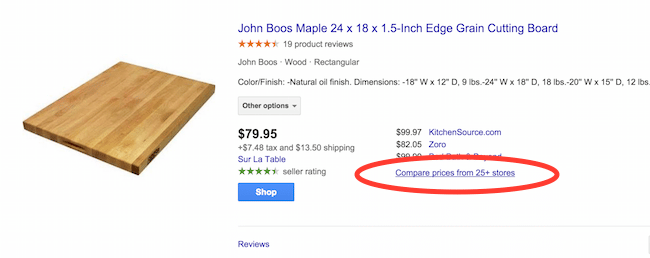
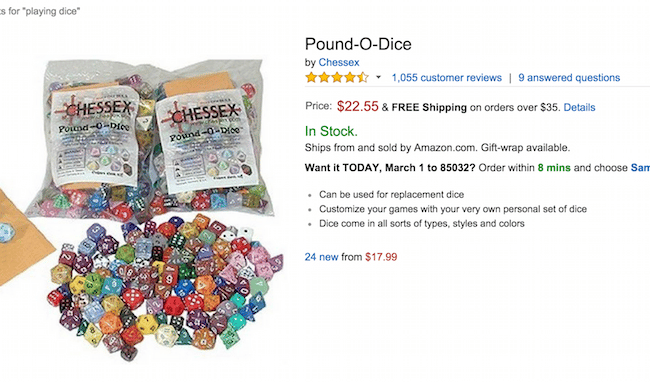
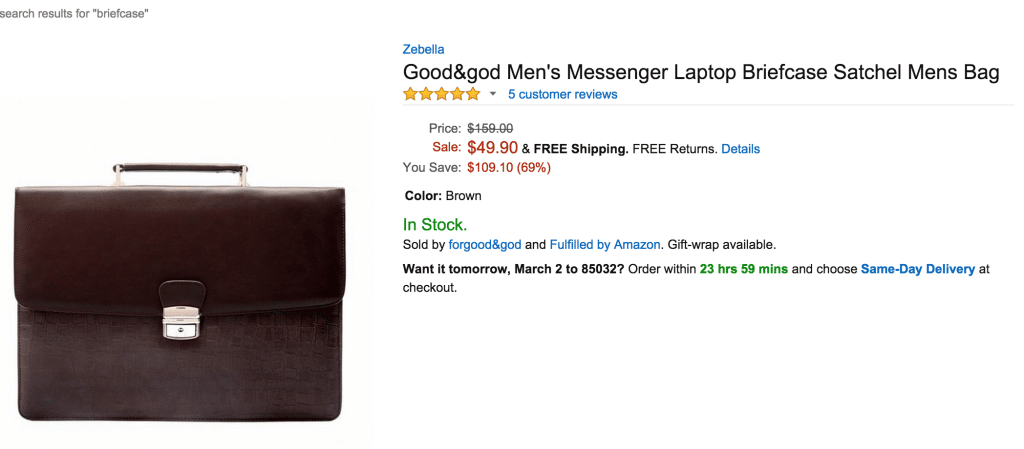
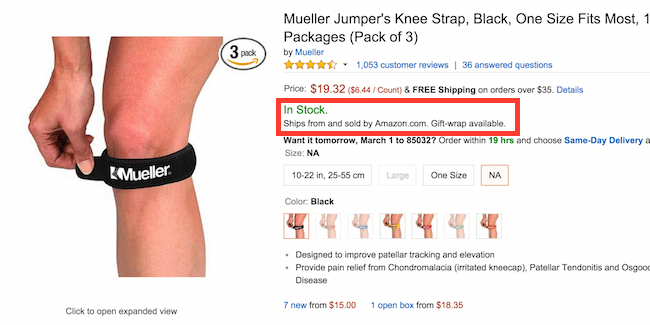
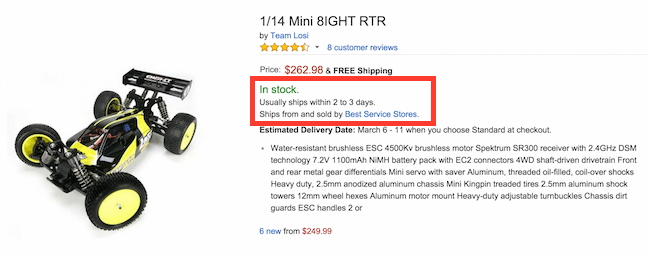




So many great articles I didn’t know which one to leave a comment on . . . Found you as I’ve been looking at ways to optimize our checkout flow and just have been sucked into the great content on your site. I am by profession a UX/Strategy Director for a consulting company, but just launched an e-commerce site last September that combines my web knowledge with my husband’s profession (law enforcement). We are both still working our current jobs, which makes it harder. We had the idea 2.5 years ago because my husband noticed a hole in everyday carry (EDC) gear availability; that there weren’t any places dedicated to this niche. Now we are in that great “start up” stage where we have little ranking with Google, failed at PCP (which you mention in an earlier article and are spot on!) and after 4 months live clearly see that some of our products were poor choices and we need to be better at differentiating ourselves from Amazon and other large retailers. We are shifting our focus to small-run craftsmen/artisan products, in addition to more of the standard product lines, but all of your articles are really pointing me in the right direction here. I also loved the article on the BC check-out flow. It took SO LONG doing product photography, descriptions and entering products that we launched with BC as-is–just now starting to look at where we can make changes and edits. ANYWAY–love what you’re doing. Thanks for all the great advice. Doing this is much, much harder than telling a large company what to do. I’ve realized how much I really don’t know.
Thanks so much for the wonderful comment Jackie and best of luck with your site as you continue to build it out and learn more about ecommerce.
“Don’t get caught up in the glory of running a “$1,000,000 business”. Worry about making money!” —Amen!
Really loving these blog posts, Mike. Thanks to you and Grant for putting this together. Can’t wait to read more!
It’s articles like these that help keep the fire burning!
Thanks very much for the kinds words Chris. Best of luck to you on whatever store you put together!